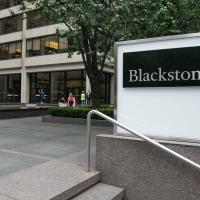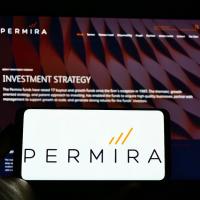Andrea Auerbach, global head of private investment research at Cambridge Associates, says that given today’s private equity valuations, now is the right time to sell.
The high water mark for fundraising in private equity was 2007 when the market saw around USD270 billion in capital raised. This year is getting close to that figure. “What we are seeing is that US fundraising is getting ‘toppy’. It’s not yet setting record-breaking levels, but it is noteworthy,” says Auerbach.
If you look at the private investment arena, the amount of capital ebbs and flows. After the high-water mark of 2007, the market took a dip but it has been climbing of late, with one figure earlier this year from Preqin suggesting that was an estimated USD846 billion in dry powder.
As capital inflows ebb and flow, so too do price multiples in public markets. “To invest in an elevated level today, your company is going to need to justify being worth significantly more five years from now at exit. But in a downturn your company could end up being worth less when you go to exit, and that is a concern for LPs and should be a focus for GPs,” says Auerbach.
For two years now, valuations have been at the highest purchase price multiple in the industry. It is without doubt a great time to sell, not a great time to buy. GPs are being required to do even more digging around to unearth the next best investment opportunity and think carefully about how best to hone their investment strategy. Because for every fund they wind down in this seller’s market, they need to put fresh capital to work. The conveyer belt of cashing in and raising new funds never stops.
That tension is always present.
Those who invested in PE funds five years ago should be benefiting in this sellers’ environment.
“If you’re an investor right now, in a new fund, you’re probably going to be asking GPs: what assets are you buying? Where are you looking to generate higher returns (in this high valuation market)?” says Auerbach.
She thinks that 2017 could come close to the 2007 figure, suggesting that if one factors in co-investment activity, which is a non-reported figure, new capital flows for PE this year could approach USD240 billion to USD250 billion.
Commenting on the dry powder figure mentioned earlier, and the potential challenge this presents, Auerbach says:
“The GPs are always under the pressure of the ticking clock of their investment period. GPs raise a fund and they typically have five, maybe six years to put it to work. The challenge isn’t can they put it to work. It is can they put it to work to generate a compelling return for their LPs?
“That is the real pressure.
“Valuations are at all-time highs and have been at this elevated level now for several years. The concern is that GPs decide this investment environment will persist and continue as if it’s business as usual.”
One trend that has manifested itself rather clearly over recent years has been the fragmentation of strategies that now exist. Plain vanilla strategies are getting squeezed. The response has been the flourishing, some might say splintering, of strategies: a sign that this industry, which at 30 years old is still quite young, is becoming more institutionalized and mature.
Within the growth equity space, for example, there is an entire ecosystem of managers and strategies: buy-and-build, sector funds, growth buyouts, growth equity, venture capital.
That fragmentation, says Auerbach, was an attempt by managers to find new sources of return in corners of the marketplace others couldn’t get to. These “off-shoots” from plain vanilla PE strategies are all in pursuit of finding and generating compelling returns for institutional investors in this current high valuation market environment.
Asked whether she thinks that trend for fragmentation will continue, Auerbach remarks:
“Absolutely yes, I do. As different spaces get overwhelmed with capital the return potential gets competed away and become less interesting to investors. I would perhaps refer to it more as specialization that splintering; the search for a sustainable competitive advantage is what’s driving that fragmentation.”
To illustrate the current trend for selling PE portfolio interests, DH Private Equity Partners, the European private equity firm, recently today announced that its fund, DH V, agreed to sell their entire stake in TMF Group, a leading provider of high value business services to organisations globally, to funds advised by CVC Capital Partners for EUR1.75 billion.
The transaction is expected to close in the first half of 2018 subject to regulatory approvals.
Historically, the majority of TMF’s revenues were generated in Europe, where the company had a long-established, strongly competitive position. During DH Private Equity Partners’ ownership, through a combination of new greenfield sites and 32 acquisitions, TMF Group has built out its presence in other parts of the world and, as a result, now offers a unique global platform.
By the end of 2016, revenue and EBITDA had grown by 148 per cent and 131 per cent respectively, since DH Private Equity Partners acquired the business in 2008.
The sale of DH V’s stake in TMF Group represents the seventh successful exit from the fund, with one further asset remaining before the fund portfolio is fully realised.
Returns in PE funds used to be in the 20 per cent range. Today, the median return is 11 per cent.
In a low interest, low return environment this acts as a tractor beam for investors looking to add return.
Against this background, LPs wishing to increase their allocation to private equity are increasingly turning to GPs to do co-investment deals.
As Auerbach explains:
“We’ve done some analysis and what we’ve observed is that the difference between gross investment performance and net performance (paid fees and carry) averages 750 basis points.
Investors don’t have to pay that when co-investing. It is a way to substantially increase their returns in a low return environment, simply by “buying wholesale via co-investing.
“Hence why we see a lot of co-investment activity.
“We have a co-investment practice advising clients and my estimate is that co-investment activity could easily be 20 to 25 per cent of all capital being deployed in the market, and it’s not reportable so very difficult to accurately track. On the back of the USD200 billion or so raised in 2016, you could add another USD40 billion on top (in 2017).”
Institutional investors don’t want to pay retail for exposure. They want to get as close to wholesale pricing as they can.
Co-investing is a trend that will likely continue for some time to come. Like strategy fragmentation, it is another example of the PE market maturing.
In conclusion, Auerbach says that there is a lot of innovation happening with respect to fund structures at the middle and lower end of the industry, in response to more institutional investors investing direct into PE, as well as real estate and infrastructure. Some PE funds are offering the opportunity to invest very long-term e.g. 20-year terms.
Fee structures are also evolving.
“As mentioned earlier, investors want to re-capture that 750 basis points of return that comes off the top in a traditional fund structure. So what I’m seeing is managers coming up with fee structures that aren’t even close to 2/20, and structuring funds with an investment period that reduces the pressure of having to put capital to work, to build stronger partnerships with LPs,” concludes Auerbach.
There are plenty of green shoots in the private equity industry. Question is, which ones are going to flourish?






